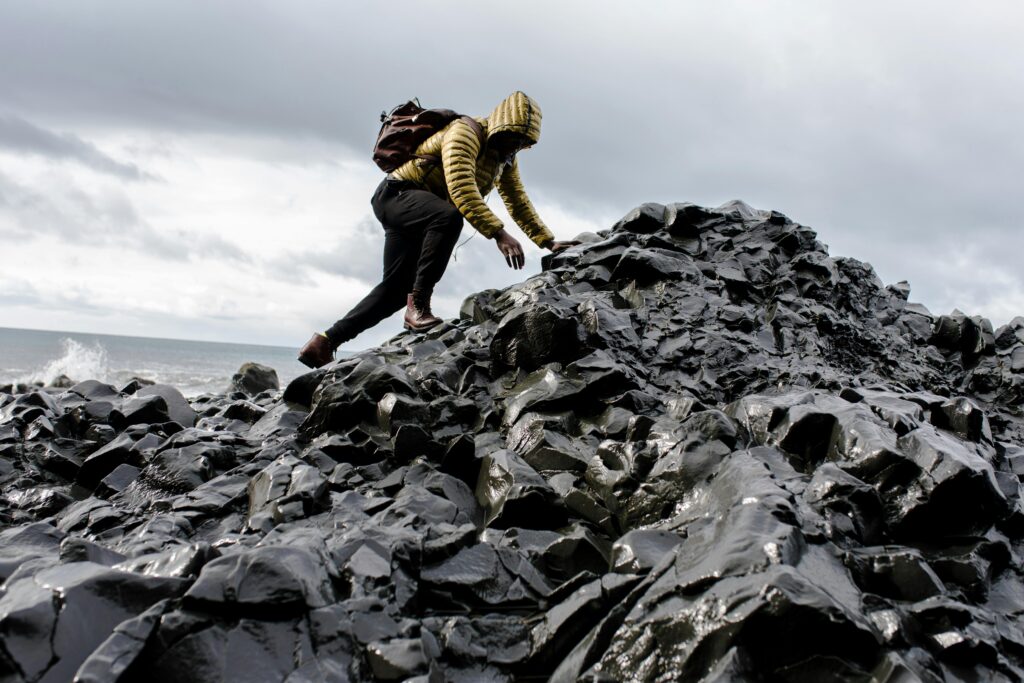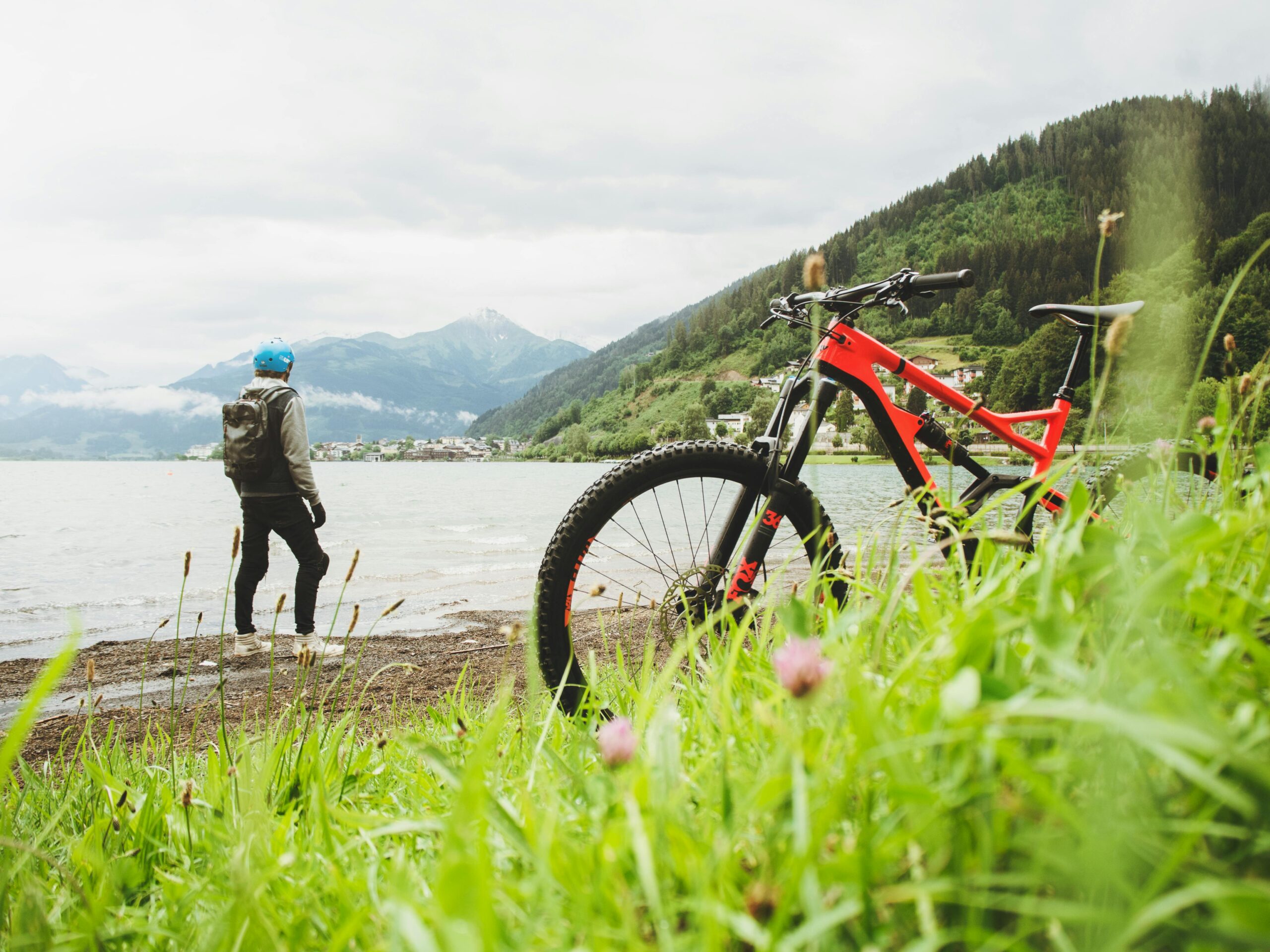Hiking is more than just a physical activity; it’s a journey that tests the limits of our endurance, resilience, and spirit. For many, the allure of conquering the world’s most challenging hikes is irresistible, offering a chance to experience nature’s raw beauty while pushing personal boundaries. Whether it’s the high altitudes of the Himalayas or the rugged paths of the Andes, these hikes require meticulous preparation and unwavering determination. In this blog post, we will explore some of the toughest hikes on the planet, providing insights and tips on how to prepare for these incredible adventures.
Physical Conditioning: Training Routines and Fitness Levels Needed
Preparing for extreme hikes requires a robust physical conditioning regimen tailored to the unique challenges of rugged terrains and varying altitudes. To build the necessary endurance, hikers should engage in a mix of cardiovascular exercises, strength training, and flexibility workouts. Cardio routines, such as running, cycling, and swimming, enhance cardiovascular health, ensuring that your heart and lungs can handle prolonged exertion. Aim for at least 150 minutes of moderate aerobic activity or 75 minutes of vigorous activity weekly.
Strength training is equally crucial, focusing on building muscle groups that will be heavily utilized during the hike. Exercises like squats, lunges, and deadlifts target the legs and core, which are essential for stability and endurance on uneven surfaces. Incorporating upper body workouts, such as push-ups and pull-ups, ensures balanced muscle development, aiding in tasks like carrying a heavy backpack.
Flexibility workouts, including yoga and stretching exercises, help prevent injuries by improving range of motion and reducing muscle stiffness. It’s advisable to practice hiking with a loaded backpack, gradually increasing the weight and distance to simulate real conditions. Incorporating hill training and stair climbing into your routine can also prepare your body for the ascents and descents typical of extreme hikes. A well-rounded fitness program, tailored to your hike’s specific demands, is vital for success.
Mental Preparation: Techniques for Building Resilience and Determination
Mental preparation is as critical as physical training when tackling extreme hikes. The ability to maintain resilience and determination in the face of adversity can make the difference between success and failure. Techniques such as visualization and positive affirmations can significantly enhance mental fortitude. Visualizing the trail, including its challenges and triumphs, helps set realistic expectations and prepares the mind for the journey ahead.
Developing a positive mindset is crucial. Regularly practicing positive affirmations reinforces self-belief and motivation. Mindfulness and meditation practices can also build mental resilience. These techniques enhance focus, reduce anxiety, and help maintain composure under stress. Setting incremental goals throughout the hike can provide a sense of achievement and maintain motivation, making the overall journey more manageable.
Building mental toughness also involves simulating hike conditions during training. Exposing yourself to uncomfortable or challenging situations, such as hiking in adverse weather or on difficult terrain, helps acclimate the mind to potential difficulties. It’s essential to remember that mental preparation isn’t just about enduring hardship but also about enjoying the journey. Cultivating a mindset that finds joy and fulfillment in the experience can make the toughest hikes immensely rewarding.
Gear and Equipment: Essential Items for Safety and Comfort
Proper gear and equipment are fundamental to ensuring safety and comfort on extreme hikes. Investing in high-quality gear tailored to the specific conditions of your hike can make a significant difference. Start with the basics: a durable backpack that fits well and distributes weight evenly, ensuring comfort during long treks. Look for features like adjustable straps and ample compartments for better organization.
Footwear is another critical consideration. Choose hiking boots that offer excellent support, grip, and protection. Breaking them in before the hike is essential to avoid blisters and discomfort. Clothing should be layered to adapt to changing weather conditions. Base layers should wick moisture away, insulating layers provide warmth, and outer layers should be waterproof and wind-resistant.
Safety equipment includes a reliable navigation system, whether a GPS device or a detailed map and compass. A first-aid kit tailored to your needs, including blister treatments and any necessary medications, is essential. For hydration, carry a water filtration system or purification tablets. High-energy snacks and meals that are easy to prepare and carry are crucial for maintaining energy levels.
Additional items like a multi-tool, headlamp, and trekking poles can enhance safety and comfort. Emergency shelter, such as a lightweight tent or bivy sack, and weather-appropriate sleeping bags are crucial for overnight hikes. Ensure all gear is tested and in good working condition before the hike to avoid any last-minute issues.
Research and Planning: Importance of Studying the Trail and Weather Conditions
Thorough research and meticulous planning are the bedrock of a successful extreme hike. Understanding the trail’s specifics, including its length, elevation changes, and technical difficulties, is crucial. Start by obtaining detailed maps and guidebooks that provide insights into the terrain, trail markers, and points of interest. Online resources and forums can offer up-to-date information from recent hikers, including trail conditions and potential hazards.
Weather conditions play a pivotal role in hike planning. Check long-term and short-term forecasts, and be prepared for sudden changes, especially in mountainous regions where weather can be unpredictable. Understanding the seasonal weather patterns of the area helps in selecting appropriate gear and clothing.
Planning your route involves more than just following a trail. Identify potential water sources, camping sites, and emergency exit points. Creating a detailed itinerary and sharing it with someone not on the hike ensures someone is aware of your plans and can alert authorities if necessary.
Consider the environmental impact and regulations of the area. Familiarize yourself with Leave No Trace principles to minimize your ecological footprint. Permits may be required for certain trails or camping areas, so ensure all necessary paperwork is completed in advance. Comprehensive research and careful planning provide the foundation for a safe, enjoyable, and successful extreme hiking adventure.
Description of the Trek
The Mount Everest Base Camp Trek is one of the most iconic and sought-after trekking routes in the world. Nestled in the heart of the Himalayas, this trek offers an unparalleled experience of breathtaking landscapes, rich cultural heritage, and the awe-inspiring sight of the world’s highest peak, Mount Everest. The journey begins in the bustling town of Lukla, following a flight from Kathmandu. From Lukla, trekkers traverse through picturesque villages, lush forests, and suspension bridges that span deep gorges, gradually ascending to higher altitudes.
The trail takes you through Namche Bazaar, the bustling Sherpa capital, where trekkers can acclimatize and explore local markets. As you progress, the scenery transforms into rugged terrain and glacial moraines, leading to the high-altitude monastery of Tengboche. The final leg of the trek involves a challenging climb to Gorak Shep, the last settlement before reaching the Everest Base Camp. Here, at an elevation of 5,364 meters (17,598 feet), trekkers are rewarded with a sense of achievement and awe-inspiring views of the Khumbu Icefall and surrounding peaks.
Challenges and Rewards
The Mount Everest Base Camp Trek is not for the faint-hearted. The high altitude poses significant challenges, with risks of altitude sickness being a primary concern. Trekkers must acclimatize properly and be prepared for physical exertion in low-oxygen environments. The terrain can be rugged and steep, requiring good physical fitness and endurance. Weather conditions are unpredictable, with the possibility of extreme cold, wind, and snow, especially at higher altitudes.
Despite these challenges, the rewards are immense. The trek offers unparalleled views of some of the world’s highest peaks, including Lhotse, Nuptse, and Ama Dablam. The cultural experiences along the way, including interactions with the friendly Sherpa people and visits to ancient monasteries, provide deep insights into the local way of life. The sense of accomplishment upon reaching the base camp, combined with the camaraderie formed with fellow trekkers, makes this journey an unforgettable adventure.
Tips for Preparation
Preparation is key to successfully completing the Mount Everest Base Camp Trek. Begin with a rigorous physical training regimen several months before your trek. Cardiovascular exercises, strength training, and hiking with a loaded backpack are essential to build the necessary endurance. Acclimatization is crucial, so plan for sufficient rest days to allow your body to adjust to the altitude.
Pack appropriately with high-quality gear tailored for cold and unpredictable weather. Essential items include layered clothing, a sturdy pair of trekking boots, a good-quality sleeping bag rated for low temperatures, and a reliable backpack. Don’t forget trekking poles, which can help reduce strain on your knees during descents.
Stay hydrated and maintain a balanced diet, as proper nutrition is vital at high altitudes. Bring along water purification tablets or a filtration system, as well as high-energy snacks. It’s also advisable to carry a basic first-aid kit and any necessary medications for altitude sickness.
Researching the trek thoroughly and understanding the route, weather conditions, and potential risks can enhance your preparedness. Hiring a reputable guide or joining a trekking group can provide additional support and ensure safety. Lastly, securing the necessary permits and insurance coverage before your trek is essential to cover any unforeseen circumstances.
Completing an extreme hike is a transformative experience, as evidenced by testimonials from those who have braved the trails. Many hikers describe a profound sense of accomplishment and personal growth. Sarah, who completed the Mount Everest Base Camp Trek, recounts, “Reaching the base camp was a culmination of months of preparation and pushing my physical and mental limits. The camaraderie with fellow trekkers and the breathtaking landscapes made every challenge worthwhile.”
John, who hiked the Pacific Crest Trail, shares, “The sheer diversity of the terrain, from deserts to forests, was incredible. Each section of the trail brought new challenges and rewards. The support from the hiking community was amazing; I met lifelong friends along the way.”
Emma, who tackled the Appalachian Trail, highlights the emotional aspect, saying, “The trail tested my resilience in ways I never imagined. Overcoming daily obstacles and enduring harsh weather conditions made me realize my inner strength. The kindness of strangers I met along the way was heartwarming and motivating.”
Lessons Learned and Personal Insights
Experienced hikers often emphasize the importance of preparation and adaptability. Sarah advises, “Thorough planning is essential, but being flexible and adapting to unforeseen circumstances is equally important. Weather conditions can change rapidly, so always have a backup plan.”
John learned the value of pacing and listening to his body, stating, “It’s easy to get caught up in the excitement and push too hard, but respecting your body’s limits and taking rest days when needed can prevent injuries and burnout.”
Emma discovered the significance of mental fortitude. “There were days when I felt like giving up, but breaking the hike into smaller, manageable goals kept me going. Focusing on the journey rather than the destination helped maintain motivation.”
Many hikers also emphasize the importance of gear and nutrition. “Invest in good quality gear that suits the specific demands of your hike,” Sarah advises. “Proper nutrition and staying hydrated are crucial, especially at high altitudes. Pack enough high-energy snacks and a reliable water purification system.”
Motivational Anecdotes and Advice for Aspiring Hikers
Personal stories from experienced hikers are filled with motivational anecdotes that inspire aspiring adventurers. Sarah recalls a particularly tough day on the Everest Base Camp Trek, “I was struggling with altitude sickness and exhaustion. A fellow trekker shared their oxygen canister with me and encouraged me to keep going. That act of kindness and the beautiful sunrise the next morning rejuvenated my spirit.”
John shares a moment of triumph on the Pacific Crest Trail, “After weeks of hiking through challenging terrain, reaching the halfway point was incredibly emotional. It was a testament to perseverance and reminded me why I started this journey.”
Emma offers advice for those considering extreme hikes, “Start with shorter, less demanding hikes to build your confidence and experience. Join hiking groups or forums to connect with seasoned hikers and gain valuable insights. Remember, the mental aspect is just as important as the physical. Believe in yourself and stay positive, even when the trail gets tough.”
In addition to personal anecdotes, seasoned hikers often stress the importance of respecting nature and practicing Leave No Trace principles. “Preserving the beauty of these trails for future generations is a shared responsibility,” John emphasizes. “Respect wildlife, stay on designated paths, and carry out all your waste.”
For those dreaming of embarking on extreme hikes, these personal stories and insights offer invaluable guidance and inspiration. The common thread in all these testimonials is the profound sense of achievement, the lasting friendships formed, and the life-changing experiences that make every step of the journey worthwhile.
Understanding and Mitigating Risks
Embarking on an extreme hike involves facing numerous risks, from unpredictable weather conditions to physical injuries and wildlife encounters. Understanding these risks and knowing how to mitigate them is crucial for a safe and successful adventure. Start by thoroughly researching the trail and its specific hazards. Understanding the terrain, climate, and potential natural threats can help you prepare adequately. For instance, mountainous regions may pose risks of avalanches, rockfalls, and altitude sickness, while desert hikes could involve extreme heat and dehydration.
Proper preparation is essential for risk mitigation. Ensure you are physically fit and acclimated to the altitude and environmental conditions of the hike. Training hikes in similar terrains can help build the necessary endurance and familiarity with the conditions. Packing the right gear, including weather-appropriate clothing, sturdy footwear, and reliable navigation tools, is vital. Always check weather forecasts before setting out and be prepared to adjust your plans if conditions change.
Staying informed about local wildlife and their behaviors can prevent dangerous encounters. Learning about common plants and insects that may pose threats, such as poisonous species, is also beneficial. Additionally, always inform someone about your hiking plans, including your route and expected return time. This precaution ensures that someone can alert authorities if you do not return as scheduled.
First Aid Essentials and Emergency Protocols
Carrying a well-stocked first aid kit and knowing how to use it is a fundamental aspect of hiking safety. Your first aid kit should include basics like adhesive bandages, antiseptic wipes, gauze, medical tape, scissors, tweezers, and pain relievers. Additionally, include specific items for the hike’s environment, such as blister treatments, insect repellent, and antihistamines for allergic reactions. A compact first aid manual can provide guidance in case of an emergency.
Training in basic first aid and CPR can be invaluable. Knowing how to treat common hiking injuries, such as cuts, sprains, and blisters, can prevent minor issues from becoming major problems. Understanding how to recognize and treat altitude sickness, heat exhaustion, and hypothermia is crucial, as these conditions can escalate rapidly without proper intervention.
Establishing emergency protocols is essential for handling unexpected situations. Carry an emergency whistle, signaling mirror, and a high-visibility poncho to attract attention if you need rescue. Knowing the location of the nearest medical facilities and having an emergency contact list, including local search and rescue teams, can expedite help in critical situations.
Importance of Communication Devices and GPS
Reliable communication devices and GPS technology are critical components of safe hiking. In remote or rugged areas, cell phone signals can be unreliable. Investing in a satellite phone or a personal locator beacon (PLB) can provide a lifeline in emergencies, ensuring you can call for help regardless of your location. These devices can send distress signals with your GPS coordinates to emergency responders.
A GPS device or a smartphone with offline maps and a reliable GPS app is essential for navigation. These tools help you stay on track, avoid getting lost, and find the safest routes. However, it’s important to carry a physical map and compass as backups, and to be proficient in their use. Electronic devices can fail due to battery issues or technical problems, so traditional navigation skills remain invaluable.
Regularly updating friends or family about your progress through scheduled check-ins can provide peace of mind and ensure that someone is aware of your whereabouts. Many hiking apps and devices offer tracking features that allow others to monitor your location in real-time. This feature is particularly useful in emergencies, as it helps rescue teams locate you quickly.
Combining thorough preparation, the right equipment, and effective communication strategies significantly enhances your safety on extreme hikes. Understanding risks, being prepared with first aid knowledge and supplies, and leveraging modern technology ensures you can handle potential challenges and enjoy a safer hiking experience.

Leave No Trace Principles
Leave No Trace (LNT) principles are essential guidelines for minimizing the environmental impact of hiking and preserving natural areas for future generations. These principles include:
- Plan Ahead and Prepare: Proper planning helps ensure safety and minimizes resource damage. Know the regulations and special concerns for the area you’ll visit, and prepare for extreme weather, hazards, and emergencies.
- Travel and Camp on Durable Surfaces: Stick to established trails and campsites to avoid trampling vegetation and causing erosion. In pristine areas, disperse use to prevent creating new paths and campsites.
- Dispose of Waste Properly: Pack out all trash, leftover food, and litter. Dispose of human waste by digging a cathole at least 6-8 inches deep and at least 200 feet away from water sources, trails, and campsites. Pack out toilet paper and hygiene products.
- Leave What You Find: Preserve the past by leaving archaeological and historical artifacts untouched. Avoid picking plants, and do not transport natural objects like rocks or plants from their original locations.
- Minimize Campfire Impact: Use a lightweight stove for cooking and a lantern for light instead of campfires. Where fires are permitted, use established fire rings, keep fires small, and burn only sticks found on the ground.
- Respect Wildlife: Observe wildlife from a distance without disturbing them. Never feed animals as it disrupts their natural behaviors and can lead to dependency on humans. Store food securely and keep pets under control.
- Be Considerate of Other Visitors: Respect other hikers by keeping noise levels down, yielding to others on the trail, and camping away from trails and other visitors. Practice good trail etiquette to enhance everyone’s experience.
Impact of Hiking on Local Ecosystems
Hiking can significantly impact local ecosystems if not managed responsibly. Foot traffic on trails can lead to soil compaction, erosion, and damage to vegetation. Popular trails often suffer from overuse, which can strain local flora and fauna and degrade the natural beauty of the area. Wildlife can be disturbed by noise and the presence of humans, which may alter their natural behaviors and habitats.
In sensitive environments, such as alpine regions and deserts, the impact of hiking can be even more pronounced. These ecosystems are often fragile and recover slowly from disturbances. Trampling can destroy cryptobiotic soils, which are crucial for preventing erosion and supporting plant life in desert environments. In alpine areas, delicate tundra vegetation can be damaged, leading to increased erosion and habitat loss for endemic species.
Hiking also poses the risk of introducing non-native species through seeds or insects that hitchhike on gear and clothing. These invasive species can outcompete native plants and animals, leading to a loss of biodiversity and altering the ecosystem balance.
How to Hike Responsibly and Sustainably
To hike responsibly and sustainably, adhere to Leave No Trace principles and adopt additional practices that minimize your environmental footprint. Start by choosing less-traveled trails to reduce the strain on popular routes and help disperse the impact of foot traffic. Use established campsites and trails whenever possible, and avoid creating new paths or sites.
Pack out everything you bring in, including all trash and waste. Consider using biodegradable soap for washing and always wash at least 200 feet away from water sources to avoid contamination. Reduce campfire use and opt for a portable stove for cooking to minimize fire impact and prevent forest fires.
Stay on designated trails to prevent trampling vegetation and disturbing wildlife habitats. If you encounter muddy or wet sections of the trail, hike through the mud rather than around it to avoid widening the trail and causing further erosion.
Respect wildlife by observing from a distance and not feeding them. Keep food and trash securely stored to avoid attracting animals to human activity areas. If hiking with pets, keep them leashed to prevent them from disturbing wildlife.
Educate yourself about the specific environmental challenges of the area you are hiking in. Understanding local regulations and guidelines can help you make more informed decisions that support conservation efforts. By hiking responsibly, you contribute to the preservation of natural landscapes and ensure that they remain pristine and accessible for future generations to enjoy.
FAQs
Q. What are some of the most challenging hikes in the world?
A. Some of the most challenging hikes in the world include the Everest Base Camp Trek in Nepal, the Inca Trail to Machu Picchu in Peru, the Torres del Paine Circuit in Chile, the Appalachian Trail in the USA, and the Snowman Trek in Bhutan.
Q. What makes a hike challenging?
A. A hike can be challenging due to factors like steep elevation gain, difficult terrain, extreme weather conditions, high altitudes, and the overall length and remoteness of the trail.
Q. How should one prepare for a challenging hike?
A. Preparation for a challenging hike includes physical training, researching the trail, acquiring proper gear, understanding weather conditions, and ensuring adequate nutrition and hydration. It’s also important to have a plan for emergencies.
Q. What are some essential items to pack for a difficult hike?
A. Essential items for a difficult hike include sturdy hiking boots, a reliable backpack, navigation tools (map, compass, GPS), appropriate clothing layers, food and water supplies, a first aid kit, a multi-tool, a headlamp, and emergency shelter.
Q. How important is physical fitness for tackling tough hikes?
A. Physical fitness is crucial for tackling tough hikes as it helps build endurance, strength, and stamina. Regular cardiovascular and strength training, along with specific hiking exercises, can significantly improve performance and reduce the risk of injury.
Q. Are there any specific safety precautions to take on challenging hikes?
A. Safety precautions include informing someone about your hiking plan, staying on marked trails, checking weather forecasts, carrying a first aid kit, knowing basic first aid, avoiding risky shortcuts, and being aware of wildlife and potential hazards.
Q. What are some tips for staying motivated during a long and difficult hike?
A. Staying motivated during a long hike can be aided by setting small goals, taking regular breaks, staying hydrated and well-fed, enjoying the scenery, and maintaining a positive mindset. Hiking with a companion can also provide encouragement and support.
Conclusion
Embarking on one of the world’s most challenging hikes is not just about reaching the destination but about the journey itself. It’s an opportunity to connect deeply with nature, discover your inner strength, and achieve something truly remarkable. With proper preparation, respect for the environment, and a spirit of adventure, these hikes can transform your perspective on life and nature. So, lace up your boots, pack your gear, and get ready to conquer the trails that many dream of but few dare to undertake. Your adventure awaits!




